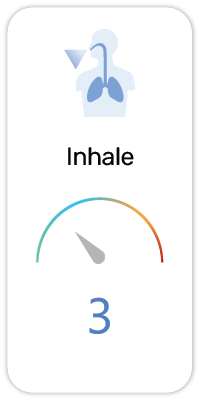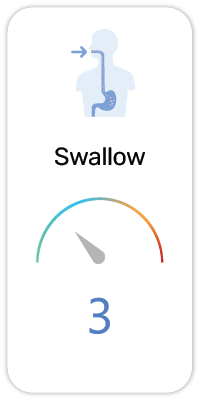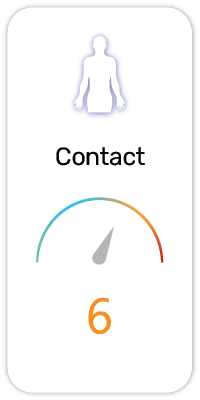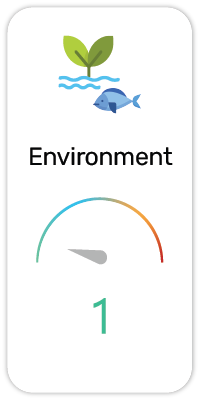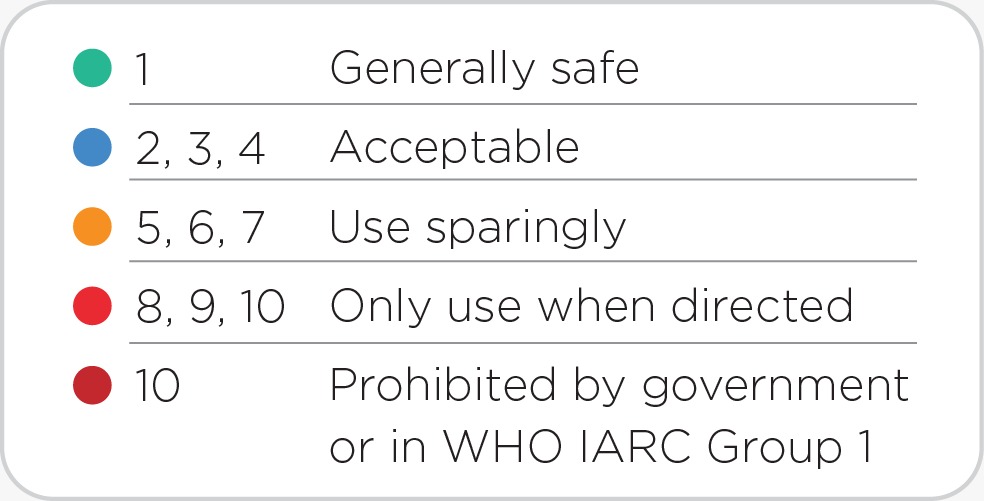Urea(in 4,626 products)
Potential Risk Index®:
About:
Functions:
1. Antistatic Agent - Reduces or eliminates the build up of static electricity.
2. Biologics - Biological components such as amino acids and its derivatives which modifies certain functions
3. Drug / Medicine - Treats, alleviates, cures, or prevents sickness. As officially declared by a governmental drug/medicine regulatory body
4. Emollient - Softens and soothes the skin. Helps with skin conditioning.
5. Fragrance / Fragrance Component - Provides or enhances a particular smell or odor.
6. Gelling Agent / Thickener - Increases the viscosity by thickening the liquid to give it more texture
7. Humectant - Binds with water to increase skin hydration. Also enhances water absorption of the skin
8. Permeation Enhancer (Cosmetics) - Improves the absorption of ingredients through the skin
Urea, also known as carbamide, serves an important role in the metabolism of nitrogen-containing compounds by animals and is the main nitrogen-containing substance in the urine of mammals. It is a colorless, odorless solid, highly soluble in water, and practically non-toxic.
Urea is widely used in fertilizers as a source of nitrogen and is an important raw material for the chemical industry. In medical use, urea-containing creams are used as topical dermatological products to promote rehydration of the skin. It is also an ingredient in some skin cream, moisturizers, hair conditioners, and shampoos. In food industry with E number E927B, it acts as a yeast nutrient for fermented products, and as a browning agent that induces browning for commercially baked goods. It is used in beer, wine, and commercially made baked goods. [1]
It is approved to use as food additive in EU and generally recognized as safe food substance in US.
Recent Findings:
Urea is extremely effective in treating xerosis/xeroderma (dry skin) which up to 75% of older people will experience some time in their lives. [2] In a study conducted on 2 cohorts of 21 volunteers aged >60 years for 28 days, the study concluded that an emollient containing urea is far more effective than one without urea. "The test emollient hydrated the skin to a significantly greater extent and for a longer period of time compared to the control emollient, an effect associated with significant elevation of carboxylate groups (a marker of moisturizing factor content) within the stratum corneum (SC)." [2] "Aged skin contains significantly reduced levels of some carboxylates, including lactate and PCA, which may account for the elevated skin surface pH and propensity for xerosis. It is interesting therefore that the test emollient maintains skin surface pH by replenishing the carboxylate pool” where natural skin pH is on average, below 5. [2] [3] “The long-term reduction of skin surface pH using topical treatments has recently been found to improve both skin barrier function and hydration” where "urea is the predominant humectant in the test emollient and so also likely accounts for a significant proportion of the SC’s improved water-holding capacity”. [2] Overall, the test emollient containing urea is "well-tolerated in people with dry skin aged over 60 years" and can be used as a "first-line treatment for xerotic skin conditions in the aged population". [2]
A separate study shows the use of urea as a humectant, where "humectants such as urea and glycerol attract and hold water in the SC” and "humectant ingredients such as urea can enhance the moisture-retaining ability of emollients and thereby their efficacy”. [4] "Dry skin is synonymous with a skin-barrier defect, and is caused by loss of water from the stratum corneum (SC). The healthy SC forms an effective permeability barrier, referred to as the ‘skin barrier’, which restricts water loss from the body, and prevents the penetration of harmful irritants and allergens.” which urea directly addresses. [4]
A questionnaire study on 5%-urea lotion and a 10%-urea lotion was conducted on 100 individuals aged 18-70. [5] For the cometic acceptability questionnaire (featuring questions such as: Is the skin too oily/shiny/moisturized?), the 10%-urea lotion had a mean acceptability score 33% higher than the 5%-urea lotion. For the quality of life questionnaire (featuring questions such as: Am I more cheerful/sociable?), the 10%-urea lotion also fared a higher mean quality of life score. [5] “Despite a higher urea concentration in the 10% urea lotion there was no difference in tolerability between the two products.” with the questionnaire study concluding that "both the new 5% urea moisturizer and the 10% urea lotion can improve atopic dermatitis. Both formulations were also very well tolerated. There was no statistically significant difference between the new 5% urea moisturizer and the 10% urea lotion in either efficacy or tolerability.” [5] This tentatively suggests that a 5%-urea lotion might suffice, which is important given that Canada's Ingredient Hotlist: List of ingredients that are restricted for use in cosmetic products restricts the maximum urea concentration for commercial use at 10%.
In a comparative study of glycerin moisturizing cream and urea moisturizing cream conducted on 197 patients with atopic dermatitis, 10% of the patients claimed severe smarting (pain upon cream application to the affected area) while using glycerin cream whereas 24% of the patients claimed severe smarting when using urea cream. [6] Objectively, "no differences were found regarding skin reactions such as stinging, itching and dryness/irritation." with equal effects of skin dryness as judged by a dermatologist. [6] This proves that glycerin-based cream is a suitable alternative for atopic dermatitis and may be milder for those with more sensitive skin.
Other medicinal effects of urea include the reduction of risk of relapse of atopic dermatitis after topical corticosteroid therapy [7], the use of urea-induced diuresis for the treatment of barbiturate intoxication [8], and the reduction of cerebrospinal fluid pressure via osmosis. [9]
Overall, urea is an effective humectant and emollient where it is able to hydrate the stratum corneum (outermost layer of the skin) as well as prevent TEWL (transepidermal water loss). It is possible to use glycerin-based products as an alternative to urea-based products. Other medicinal uses predominantly utilize urea as a hypertonic solution in order to draw out water-based fluids via osmosis.
Scientific References:
1. PubChem: https://pubchem.ncbi.nlm.nih.gov/compound/1176
2. The Effect of an Emollient Containing Urea, Ceramide NP, and Lactate on Skin Barrier Structure and Function in Older People with Dry Skin. (Skin Pharmacology and Physiology, 29(3), 135–147. doi:10.1159/000445955)
3. Natural skin surface pH is on average below 5, which is beneficial for its resident flora. (International Journal of Cosmetic Science, 28(5), 359–370. doi:10.1111/j.1467-2494.2006.00344.x)
4. Use of emollients in dry-skin conditions: consensus statement. (Clinical and Experimental Dermatology, 38(3), 231–238. doi:10.1111/ced.12104)
5. A double-blind study of tolerance and efficacy of a new urea-containing moisturizer in patients with atopic dermatitis. (Journal of Cosmetic Dermatology, 9(1), 16–21. doi:10.1111/j.1473-2165.2010.00476.x)
6. A Double-Blind Study Comparing the Effect of Glycerin and Urea on Dry, Eczematous Skin in Atopic Patients. (Acta Dermato-Venereologica, 82(1), 45–47. doi:10.1080/000155502753600885)
7. Treatment with a barrier-strengthening moisturizing cream delays relapse of atopic dermatitis: a prospective and randomized controlled clinical trial. (Yearbook of Dermatology and Dermatologic Surgery, 2011, 89–91. doi:10.1016/s0093-3619(10)79756-2)
8. Urea-Induced, Osmotic Diuresis and Alkalization of Urine in Acute Barbiturate Intoxication. (JAMA: The Journal of the American Medical Association, 185(12), 936. doi:10.1001/jama.1963.03060120046020)
9. Effect of hypertonic urea on cerebrospinal fluid pressure and brain volume. (The Journal of Physiology, 164(2), 252–264. doi:10.1113/jphysiol.1962.sp007018)
Regulatory References:
1. South Korea - Ministry of Food and Drug Safety - Prohibited/Restricted Chemicals
- Ref: 1381
2. CANADA INGREDIENT HOTLIST, List of Ingredients that are Restricted for Use in Cosmetic Products [2019]
- Urea
3. EU Approved Food Additive [2018]
- E927b
4. US FDA Generally Recognized As Safe (GRAS) Food Substances (21 CFR 184) [2017]
- § 184.1923 - Urea
5. International Fragrance Association Transparency List [2015]
- Urea
Safety and Hazards (UN GHS):
1. Causes skin irritation (H315)
2. Causes serious eye irritation (H319)
3. May cause respiratory irritation (H335)
4. Suspected of causing cancer (H351)
5. May cause damage to organs (H371)
Potential Health Concerns For:
1. Acute Kidney Injury (PubMed ID:15012908)
2. Heat Stroke (PubMed ID:16878031)
3. Hypotension, Orthostatic (PubMed ID:127594)
4. Kidney Diseases (PubMed ID:22525860)
5. Poisoning (PubMed ID:22525860)
Potential Health Benefits For:
1. Inappropriate ADH Syndrome (PubMed ID:19834406)
2. Paralysis (PubMed ID:935180)
User Comments:
Submit


